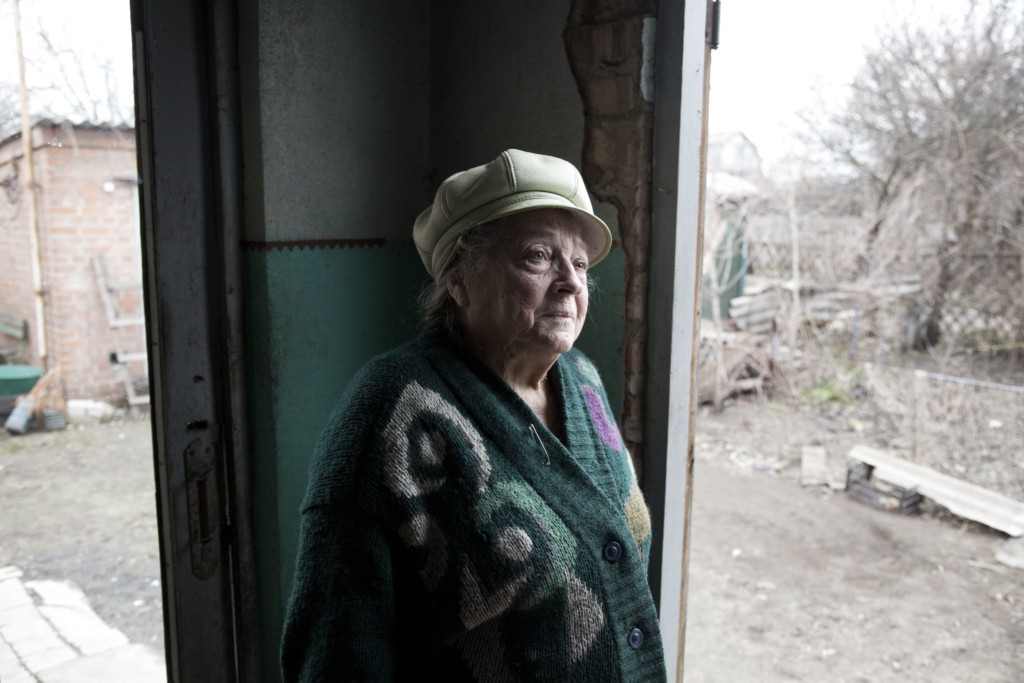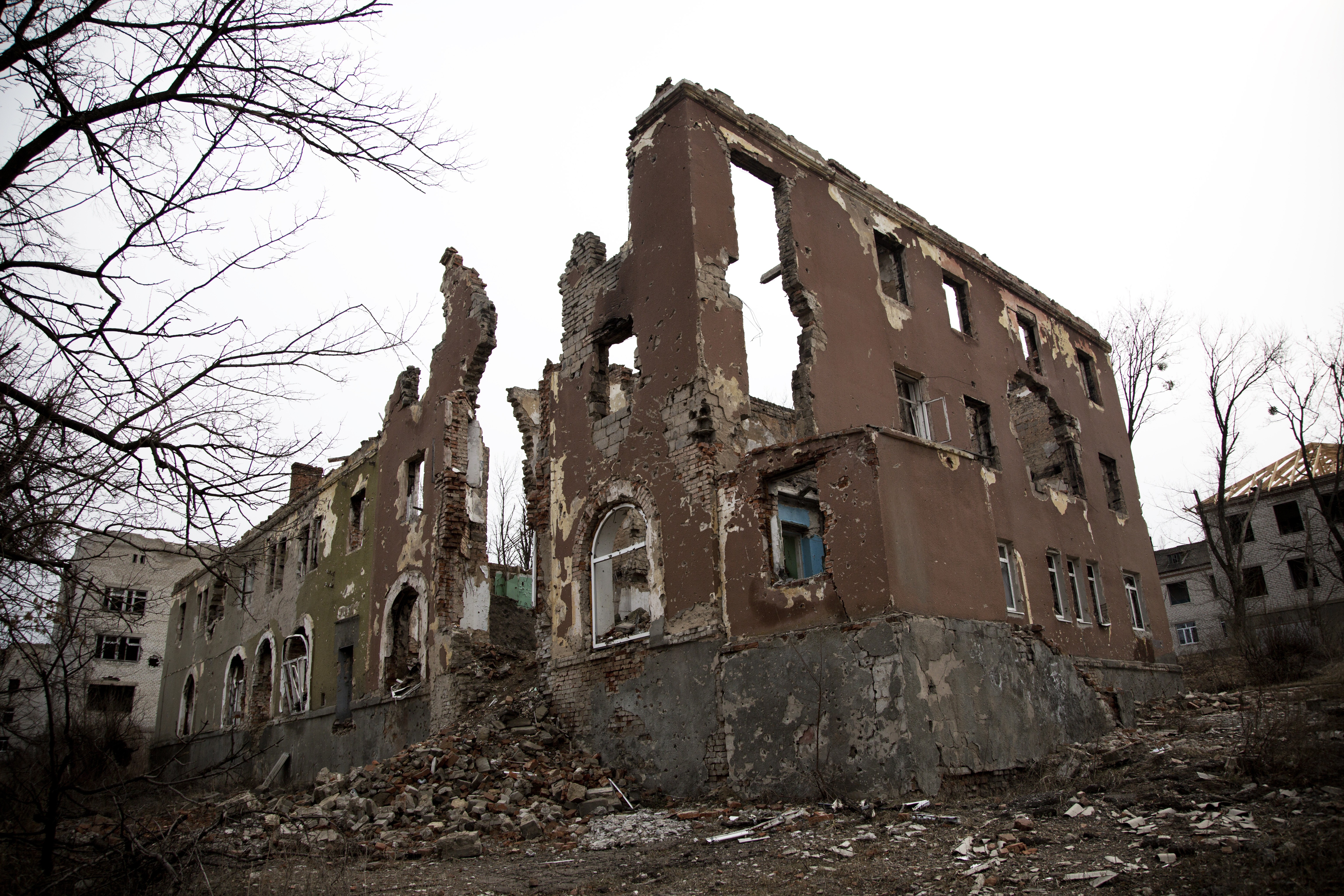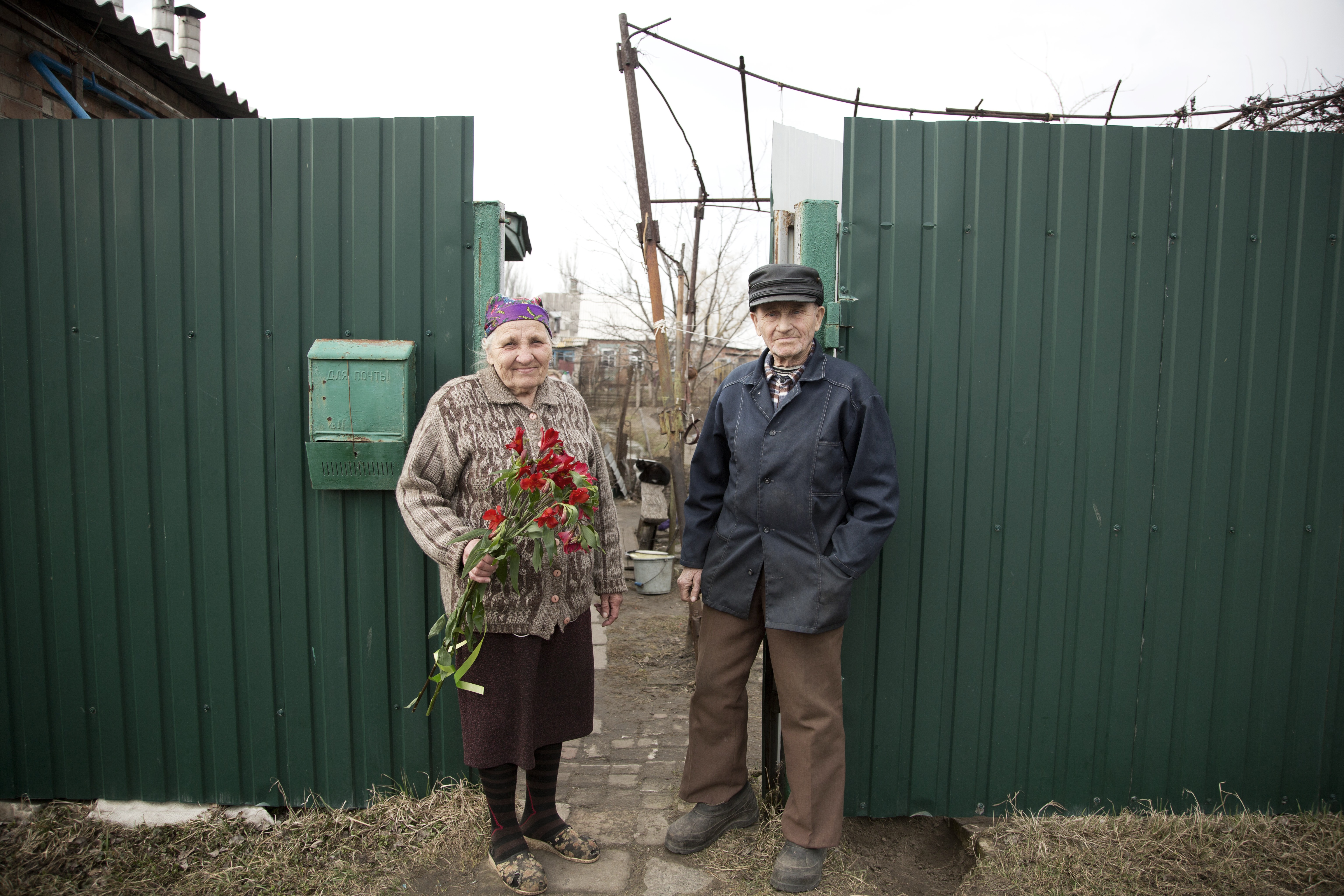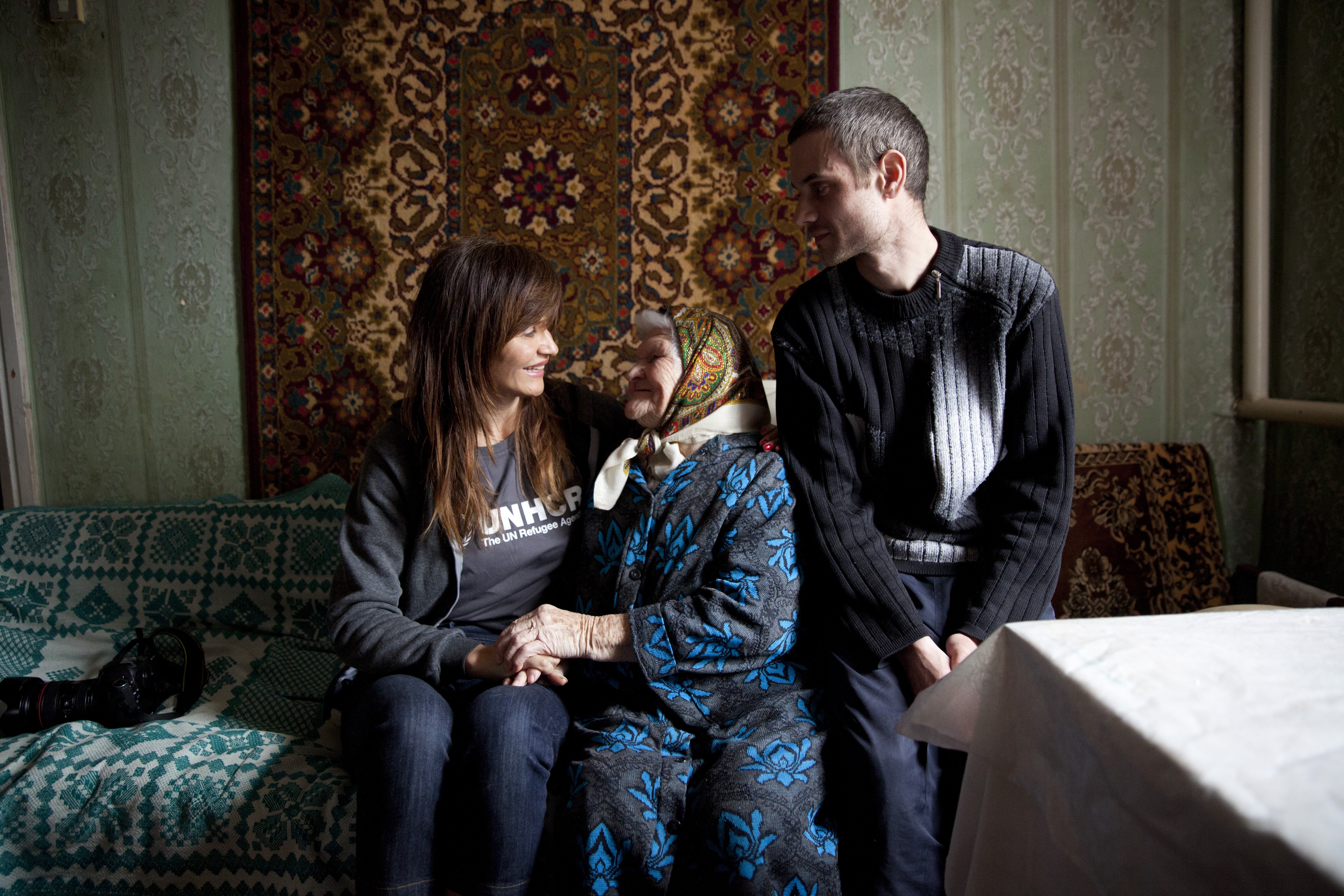I’m on a train slowly making its way through the Ukrainian countryside on a bleak and grey day, but my mind is still racing after time spent with the Babushkas (or “Grandparents”) in the conflict-affected area in the east. I’m travelling once again with UNHCR, the United Nations Refugee Agency, this time to meet and photograph vulnerable, elderly people left homeless when fighting destroyed their houses.
This whole trip is incredibly poignant for me as my own grandmother celebrates her 100th birthday in July this year. Old people can be so easily forgotten and neglected, especially during emergency situations. My mission is to remind the world that these resilient old men and women urgently need and deserve our help to rebuild their homes.
Ukraine dominated our TV screens a couple of years ago after conflict forced people to flee their homes in Crimea and eastern Ukraine. Since the violent fighting over 10,000 people have been killed and over two million people have been displaced within the country and abroad. Most are vulnerable people such as children, people with disabilities and many older people. Life was tough here already as it is one of the poorer nations in our European family. The elderly were surviving on pensions of around $40-50 dollars per month. When the conflict started in the regions of Luhansk and Donetsk, these pensions were suspended leaving the already vulnerable destitute and unable to make ends meet.
My trip here aims to spotlight these forgotten people and show how, through the work of UNHCR and its partners, they are being supported and helped to rebuild their shattered lives. UNHCR is repairing homes in conflict-affected areas for over 22,000 families and distributing vital items like blankets, coats, pots, pans, and bedding sets to those in need.
I met with some lovely old people and took their portraits and spent time listening to their testimonies. I am convinced that many of them are suffering from trauma as a result of this horrific conflict, where constant shelling destroyed large swathes of their towns and villages.
I was thinking of my own Grandmother when I met with Nina. She is 86 years old and so bright, full of smiles and chat. Her life, she tells me, has been hard. During World War II, when she was a very young girl, soldiers came to her house and forced them all to leave. Everything was taken their beds, clothes, her parents’ valuables, even her teddy. They were forced to leave quickly and she remembers her father digging a large hole in the ground and covering it with a wooden roof and them ending up living there through a number of harsh winters before finding another house. She was displaced again in the late 70s and one more time in 2014. Now she is displaced from her home and living in Kyiv.
I can’t imagine what it must be like to start life over again for the third time, when you’re already over 80 years old. But Nina’s resilience shines through, with her colorful scarves wrapped around her tender face, her beaming smile and her warm, kind eyes. By far, the number one thing I heard from many of the displaced older people I met and photographed is just how much their family home means to them and how they dream of returning one day, so they can live the rest of their lives with dignity, in the comfort and security of their own house.
It was a great honour to go east and visit some of those that have been helped to return home. In Sloviansk I met Vera, an 80-year-old retired teacher, who lives alone following the death of her beloved husband. She had a lucky escape three years ago, when a rocket exploded over her house early one morning, shooting shrapnel through her roof and destroying the bed she had just gotten up from.
Vera was inconsolable when she realised that she could no longer live in the home in which she had enjoyed the best years of her life with her husband and where so many beautiful memories from her life had taken place, one being both of her sons getting married in the garden. With no money to pay for a new roof, she was forced to move west to live with her sister. It all happened so fast that she ran with only the clothes on her back. She cried, she told me, for the longest time. Thanks to UNHCR, Vera’s house has now been repaired and she has been able to return to a home full of photographs, trinkets and happy memories of a life filled with love. To Vera, that means everything.

Vera, an 80-year old former school teacher, lives alone in the home she bought with her husband in 1969. (UNHCR/Helena Christensen)
Over and over, the people I met in Sloviansk, who had been helped to return home expressed endless gratitude for the support they have received, but there are so many more vulnerable people, who need help to go home. It only costs $800 to repair a home with a new roof, windows and insulation against harsh winters. Thanks to this program, thousands of families left homeless by conflict have been able to return to their communities and live a dignified life. Even more importantly, they’ve been empowered with a feeling of safety and security something so precious for all the older people in our lives.
When bombs fall, younger people can flee, but how often do we spare a thought for the elderly, disabled and frail? Those so often left behind and neglected in times of conflict. As I left Vera, it struck me how important it is to not only provide life-saving assistance to elderly people, but also to ensure their voices are heard. We mustn’t allow them to be forgotten. They deserve respect and attention.
Please donate to the UNHCR Shelter Appeal Nobody Left Outside to help vulnerable old people displaced by conflict, like Vera in Ukraine, get back home.
Helena Christensen is a Danish fashion model, photographer, and a UNHCR High Profile Supporter in Ukraine. She visited eastern Ukraine on a UNHCR mission in 2017.







